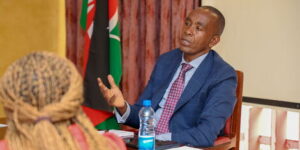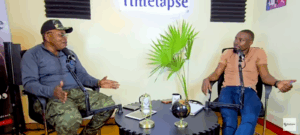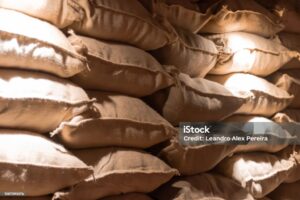
In the political landscape of Kenya, divisions often simmer beneath the surface. The Orange Democrat Movement (ODM) currently faces a significant rift among its leaders regarding support for the government. This issue has sparked debate, prompting passionate arguments from various factions within the party. The conversation centers around the role of ODM in the current administration.
Many party members grapple with the idea of aligning too closely with the government. A key point of contention remains the position of Secretary-General Edwin Sifuna. Some leaders back him, emphatically stating that party members should show respect and loyalty to both Sifuna and ODM chair Professor Peter Anyang Nyong’o.
Those opposed to the government’s broad-based approach voice their opinions frequently. They argue that such support risks undermining the ODM’s core values and principles. This group believes that the party must remain vigilant in holding the government accountable, especially amid allegations of corruption and mismanagement that continue to plague the administration.

Prominent leaders like Caleb Amisi, the MP for Saboti, Nabii Nabwera, the MP for Lugari, Tindi Mwale, the MP for Butere, and Gladys Wanga, the Governor of Homa Bay, stand out among the factions. Amisi passionately defends Sifuna, advocating for a unified stand within the party. He insists that the ODM needs to focus on the issues affecting ordinary Kenyans rather than getting entangled in government politics.
Nabwera’s stance adds a layer to the conversation. He highlights the importance of listening to grassroots voices, urging ODM leaders to prioritize the party’s long-term vision over short-term alliances. He believes that true leadership requires standing firm on principles, even when it’s not the popular choice.
Meanwhile, Tindi Mwale contributes a business angle to the discussion. He emphasizes the need for the ODM to ensure that any support for the government translates into tangible benefits for their constituencies. Mwale often speaks about economic empowerment and the dire need for job creation and infrastructure development. He worries that aligning too closely with the government might compromise the interests of his constituents.
In contrast, Gladys Wanga provides a more conciliatory perspective. As a governor, she recognizes the delicate balance between supporting the government and maintaining the ODM’s image. Wanga believes in collaboration but insists that this cooperation should not come at the expense of party ideals. She encourages members to engage in constructive dialogue, fostering collaboration without losing sight of their core mission.
Despite these discussions, the tension remains. Members of the party feel the heat of scrutiny from both opponents and constituents. As public service debates escalate, ODM’s internal dynamics are crucial. The party’s future hinges on the capacity of its leaders to reconcile differing viewpoints. Some members fear that without an agreement, the ODM risks fracturing further, compromising its effectiveness and influence in the political arena.
Editor’s pick!
The divisions within ODM demonstrate the complexities of political allegiance and the challenges of leadership. The party now stands at a crossroads, facing a critical decision. Will the leaders prioritize unity over discord, or will differing ideologies lead to a deeper schism? The next steps remain uncertain, but one thing is clear: the voice of the ODM must resonate with the people it aims to serve. As tensions simmer, only time will reveal how the party navigates this tumultuous terrain.





43chtp